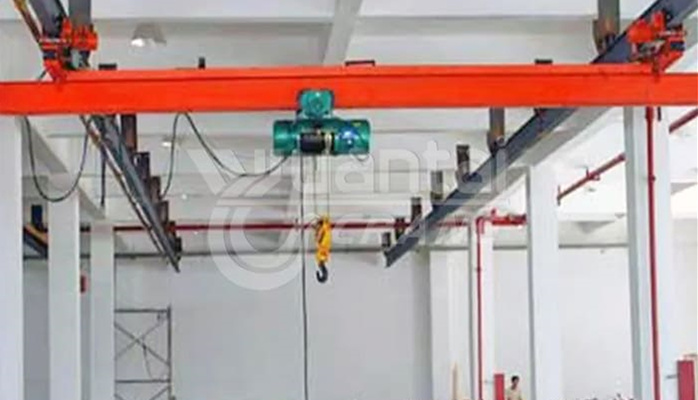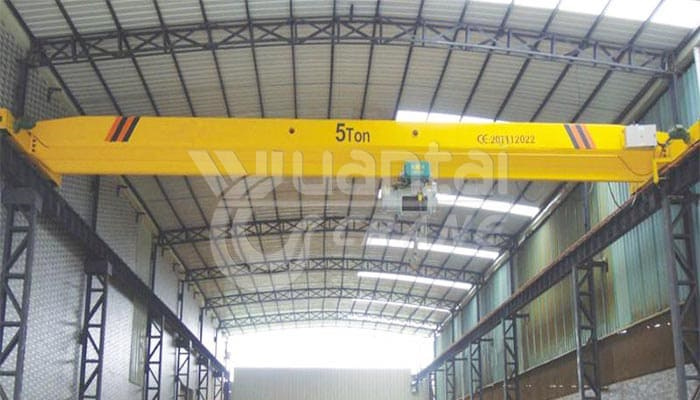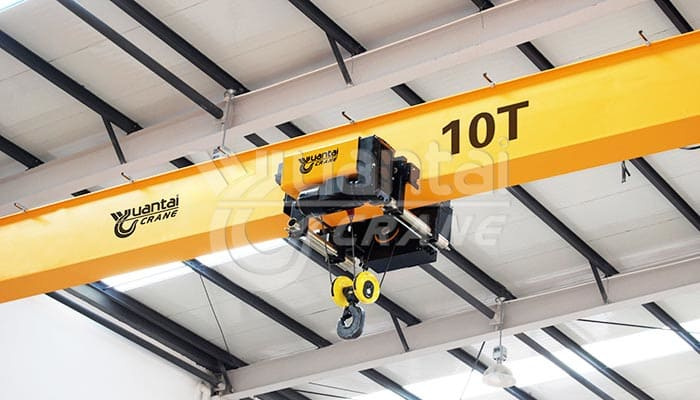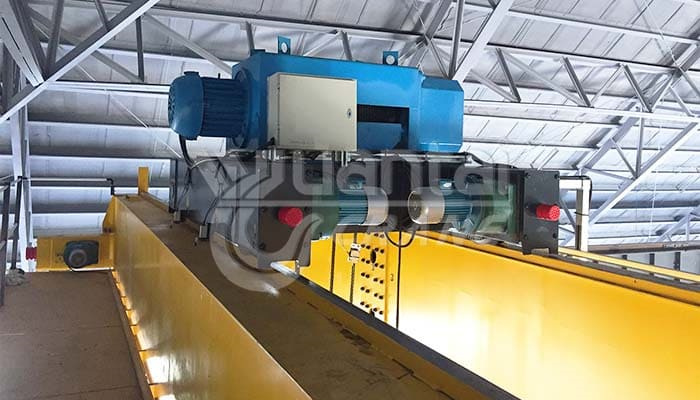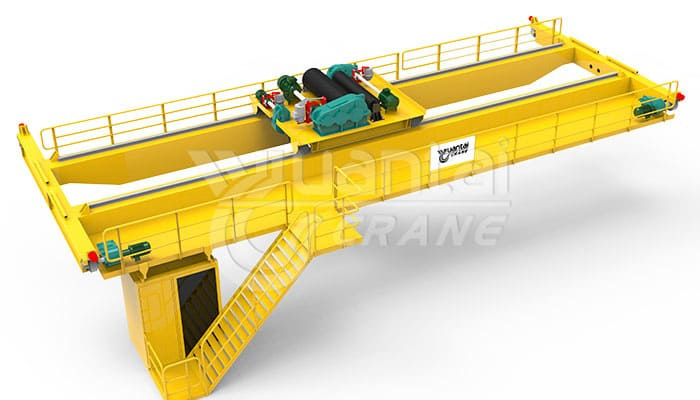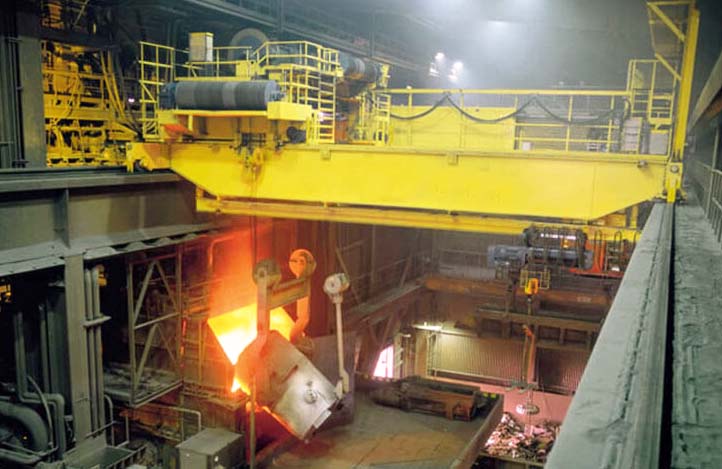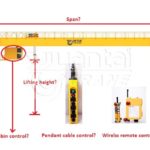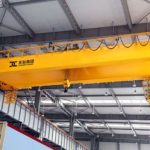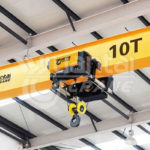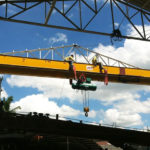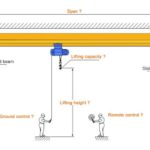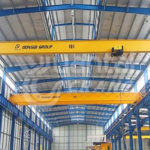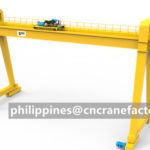Understanding Overhead Crane Specifications|Bridge Crane Specifications
An overhead crane is a heavy-duty mechanical equipment used for hoisting and moving heavy objects. It usually consists of a bridge spanning between two support columns, with a crane arm for lateral movement and a hook for lifting movement. There are a variety of bridge crane specifications, and you can choose or customize the most suitable and cost-effective bridge crane according to your specific working conditions. Understanding and determining the following overhead crane parameters is the first step for you to purchase an overhead crane:
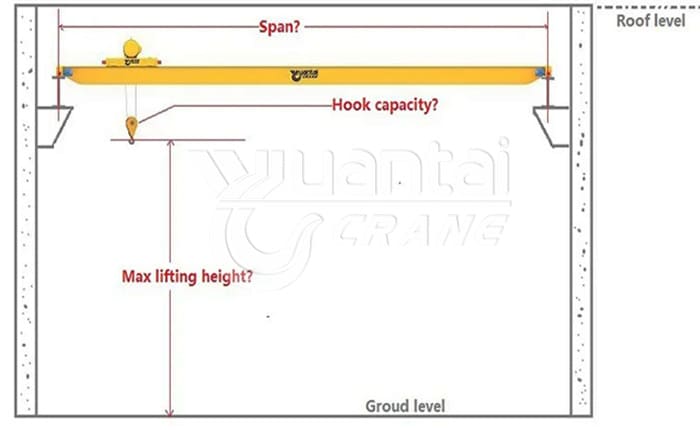
- Lifting Capacity:
The maximum load-bearing capacity of a bridge crane is usually measured in tons (tons). The rated lifting capacity refers to the maximum weight that can be safely lifted and carried under standard working conditions of mechanical design and manufacture. - Span:
The span refers to the distance that the overhead crane spans, i.e. the distance between the support columns. Span selection depends on specific job requirements and site conditions. - Lifting Height:
Lifting height refers to the vertical movement distance of the hook from the lowest position to the highest position. This parameter depends on the vertical space requirements of the job site. - Power Supply:
Overhead cranes usually require electricity as a power source. Power requirements include parameters such as voltage, frequency and number of phases to ensure that the crane can operate properly under specific power conditions. - Lifting Speed:
Lifting speed indicates the speed at which the crane raises and lowers the hook, usually measured in meters per minute or feet per minute. The choice of speed depends on the requirements of the job, which needs to improve efficiency while ensuring safety. - Cross Travel Speed:
Traverse speed refers to the speed at which the overhead crane moves laterally along the support beam, usually measured in meters/minute or feet/minute. This parameter affects the lateral movement efficiency of lifted materials. - Duty Class:
The operating class marks the design and service life of the overhead crane. Different work levels are suitable for different intensity and frequency of work, including light, medium and heavy work levels. - Control Method:
Control methods involve how to operate the overhead crane, usually including manual, wireless Remote Control and automated control systems. Choosing the appropriate control method can help improve the flexibility and safety of the operation. - Environmental Requirements:
Environmental requirements take into account the use of overhead cranes in the operating environment, including temperature range, humidity requirements and anti-corrosion design. This helps ensure that the crane operates stably in different working environments.
If you want to inquire about a bridge crane from us, please provide at least the parameter information of the bridge crane. After receiving your inquiry, we will provide you with a free quotation as soon as possible:
- lifting capacity:____ ton
- lifting height:____ m
- span: ____m
- voltage: ____V ____HZ ____Phase(for example: 380V-50Hz-3Phase)
Parameters of Several Popular Standard Overhead Cranes
Yuantai Group provides standard overhead cranes, and can also customize the overhead crane configuration for you according to any of your needs. Our bridge cranes can be divided into Single Girder Overhead Cranes and double girder overhead cranes. Single girder bridge cranes are generally used for lifting loads below 20 tons, while double-girder bridge cranes are mostly used for lifting loads. Our cranes can also be divided into various types based on functional and application design features.
Single girder overhead crane specification
2 ton overhead crane specifications:
- Crane Type: LX Underslung Crane
- Lifting Capacity: 2 ton
- Span: 3~15m
- Working Class: A3
- Ambient Temperature: -20~40℃
5 ton overhead crane specifications:
- Crane Type: LD Single Girder Overhead Crane
- Lifting Capacity:5t
- Span:7.5~28.5m
- Working Class: A3, A4
- Ambient Temperature:-20~40℃
10 ton overhead crane specifications:
- Crane Type: HD European Single Girder Overhead Crane
- Lifting Capacity:10t
- Span: ≥6m
- Working Class: A5
- Ambient Temperature:-25~40℃
Double Girder Overhead Crane Specification
20 ton overhead crane specifications:
- Crane Type: LH Double Girder Electric Hoist Overhead Crane
- Lifting Capacity:20t
- Span:8m~32m
- Working Class: A3~A5
- Ambient Temperature:-20~40℃
50 ton overhead crane specifications:
- Crane Type: QD Double Girder Overhead Crane with Hook
- Lifting Capacity:50t
- Span:10.5~35.5m
- Working Class: A4~A7
- Ambient Temperature:-20~40℃
100 ton overhead crane specifications:
- Crane Type: QDY Ladle Overhead Crane
- Lifting Capacity:5~74t
- Span:10.5~31.5m
- Working Class: A7
- Ambient Temperature:-10~60℃
Overhead Crane Standards
The overhead crane is a common lifting equipment. Its design and manufacturing usually need to comply with a series of domestic and foreign standards and specifications to ensure the safety, performance and reliability of the equipment.
Domestic standards (China):
- GB 3811-2008 “Bridge Crane”: This is the basic specification for overhead cranes in China’s national standards, covering design, manufacturing, installation, modification, inspection, maintenance, use and disassembly. GB 3811-2008 aims to ensure the safe use of overhead cranes in China.
International standards:
- ISO 8686-1:2003 “Cranes — Design principles for loads and load combinations — Part 1: General”:
One of the ISO standards that stipulates general principles for the design loads and load combinations of various types of cranes. - FEM 9.511 “Rules for the Design of Hoisting Appliances”:
The rules for the design of lifting equipment published by the European Material Handling Equipment Association (FEM) apply to all types of lifting equipment, including overhead cranes. - CMAA Specification 70 “Specifications for Top Running Bridge and Gantry Type Multiple Girder Electric Overhead Traveling Cranes”:
Specifications issued by the Crane Manufacturers Association of America (CMAA) cover the design and manufacturing requirements for top drive overhead cranes and gantry overhead cranes. - ASME B30.2-2016 “Overhead and Gantry Cranes (Top Running Bridge, Single or Multiple Girder, Top Running Trolley Hoist)”:
The standards issued by the American Society of Mechanical Engineers (ASME) cover the design, manufacturing and safety requirements for top-drive overhead cranes, gantry overhead cranes and top-drive hoists.
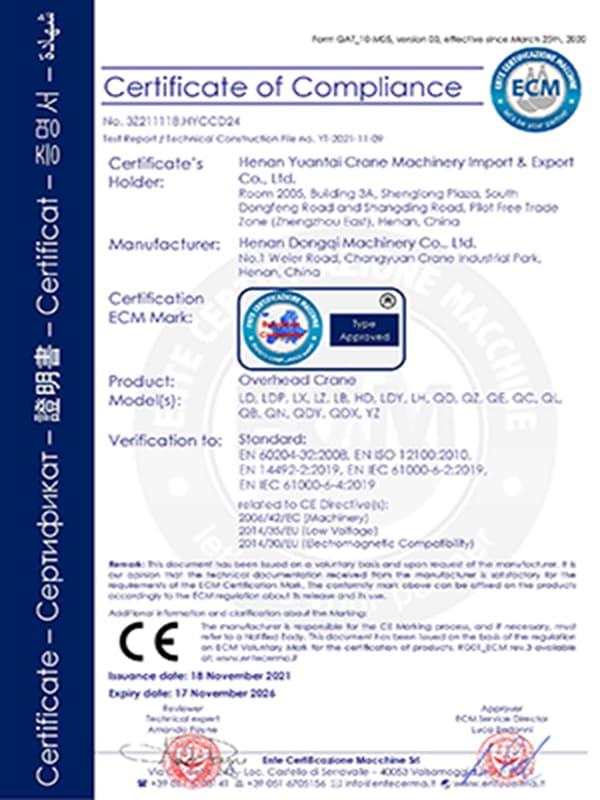
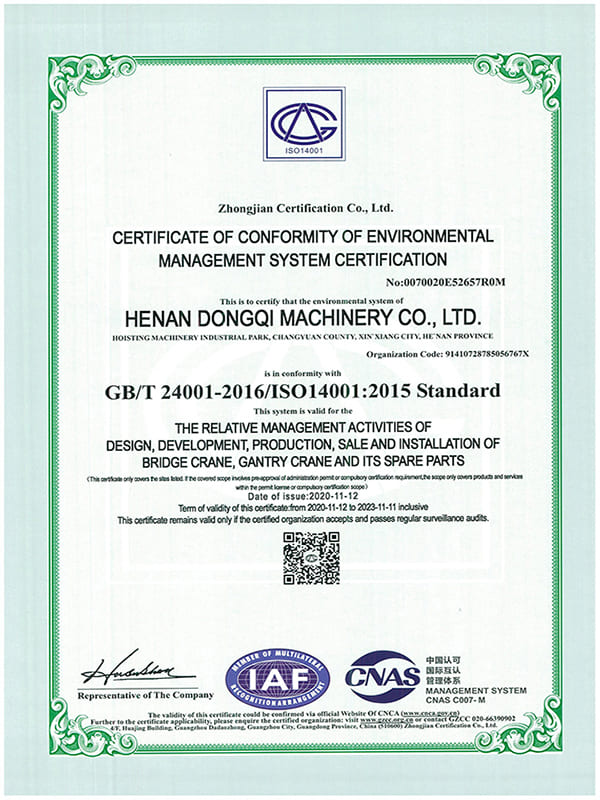
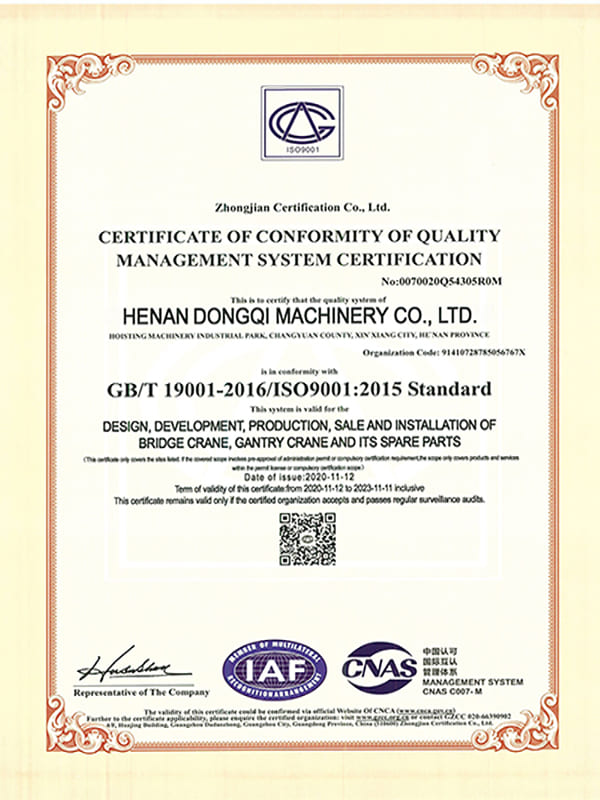
These overhead crane standards and specifications provide comprehensive guidance for the design, manufacture, installation and use of overhead cranes. Manufacturers and users should ensure that their equipment complies with applicable standards and regulations on a case-by-case basis to ensure safety and reliability.
Benefits of Following Overhead Crane Specifications
- Enhanced security:
Strict compliance with overhead crane regulations is about protecting life safety. Detailed specifications ensure the crane is designed and operated with safety in mind, reducing the risk of accidents and injuries in the workplace. - Operational efficiency:
Clear specifications help overhead cranes operate efficiently. From optimal lifting capabilities to precise control systems, adhering to specifications ensures optimal crane performance, thereby increasing overall productivity. - Long life and cost-effective:
Overhead cranes designed and maintained to specifications are built to last. Strict adherence to specifications helps extend the life of equipment and reduces long-term maintenance costs by minimizing wear and reducing the likelihood of failure.
